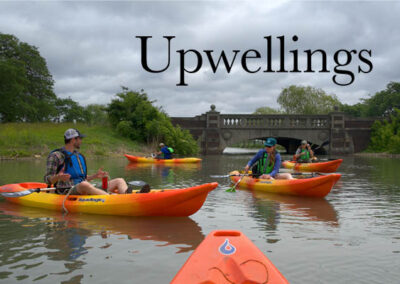In case you missed the South Haven Fisheries Workshop, videos recap presentations on the state of Lake Michigan fisheries.
On April 19 the Southern Lake Michigan Regional Fisheries Workshop was hosted by Michigan Sea Grant in conjunction with South Haven Steelheaders. This annual event draws local South Haven anglers in addition to big lake fishing enthusiasts from around southwest Michigan.
The evening meeting featured a brief update on Sea Grant activities including the Huron-Michigan Diet Study and other citizen scienceprograms, followed by three presentations that are now available on the Michigan Sea Grant YouTube channel. The evening concluded with two presentations on cisco (similar to those offered at the Ludington workshop) and a short discussion on the topic of cisco management options.
The latest video presentations focus on recent developments in Lake Michigan fisheries management and the latest results from forage fish monitoring and mass marking.
Lake Michigan Management Plan
Jay Wesley, Lake Michigan Basin Coordinator with Michigan Department of Natural Resources (DNR), discussed the DNR’s Lake Michigan Management Plan and the public process that accompanied development of the plan, which was approved in January.
Key elements of the plan include:
- invasive species prevention
- improvement of habitat connectivity in rivers that feed into Lake Michigan
- maintaining predator-prey balance
The plan strives to maintain a diverse fishery focused primarily on Chinook salmon, coho salmon, and steelhead with additional opportunities for other species. Marketing the lake’s excellent fishing opportunities with products like the new Roadmap to Lake Michigan Fishing is also a priority. See the video for more details and Jay’s overview of stocking options for 2019 (beginning at 16:17).
Forage Fish Monitoring
Chuck Madenjian, Research Fishery Biologist with U.S. Geological Survey’s Great Lakes Science Center, gave an update on forage fish abundance in Lake Michigan. This is always a topic of interest to anglers because salmon and trout depend on alewife and other forage fish for food. Total forage fish biomass (as estimated from bottom trawls) was the fourth lowest recorded since 1973. Hydroacoustic and midwater trawl sampling showed that the 2017 alewife year-class was relatively weak, but better than the very poor 2013 and 2014 year-classes. See the video for discussion of differences between sampling gears and more details on prey fish distribution around the lake.
Great Lakes Mass Marking Program
Matt Kornis of the U.S. Fish & Wildlife Service gave an update on the Great Lakes Mass Marking Program. Wild reproduction of Chinook salmon is estimated based on the ratio of stocked to wild Age 1 fish, so 2017 data were used to estimate production of 4.2 million wild Chinook salmon in 2016. This is about average for wild reproduction in recent history, and a big increase from the poor 2013 wild year-class (1.1 million) and 2015 wild year-class (2.2 million). See video for more results from salmon and lake trout tag recovery and diet studies for trout, salmon, and burbot.
The 2018 Southern Lake Michigan Fishery Workshop was a great chance to meet fisheries professionals and learn more about the status of gamefish and preyfish populations. Balancing predators and prey is a perennial topic at these workshops, and all three recorded presentations related to this theme.


